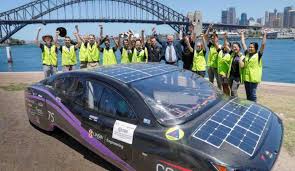
Breaking News
 NonConformist Series: Practical Wealth - Join us virtually Dec 29-30, 2025
NonConformist Series: Practical Wealth - Join us virtually Dec 29-30, 2025
 New bill would allow private citizens to fight cartels: 'WE ARE UNDER ATTACK'
New bill would allow private citizens to fight cartels: 'WE ARE UNDER ATTACK'
 Carnivore Got Me 90% There. This One Drink Changed Everything
Carnivore Got Me 90% There. This One Drink Changed Everything
Top Tech News
 Perfect Aircrete, Kitchen Ingredients.
Perfect Aircrete, Kitchen Ingredients.
 Futuristic pixel-raising display lets you feel what's onscreen
Futuristic pixel-raising display lets you feel what's onscreen
 Cutting-Edge Facility Generates Pure Water and Hydrogen Fuel from Seawater for Mere Pennies
Cutting-Edge Facility Generates Pure Water and Hydrogen Fuel from Seawater for Mere Pennies
 This tiny dev board is packed with features for ambitious makers
This tiny dev board is packed with features for ambitious makers
 Scientists Discover Gel to Regrow Tooth Enamel
Scientists Discover Gel to Regrow Tooth Enamel
 Vitamin C and Dandelion Root Killing Cancer Cells -- as Former CDC Director Calls for COVID-19...
Vitamin C and Dandelion Root Killing Cancer Cells -- as Former CDC Director Calls for COVID-19...
 Galactic Brain: US firm plans space-based data centers, power grid to challenge China
Galactic Brain: US firm plans space-based data centers, power grid to challenge China
 A microbial cleanup for glyphosate just earned a patent. Here's why that matters
A microbial cleanup for glyphosate just earned a patent. Here's why that matters
 Japan Breaks Internet Speed Record with 5 Million Times Faster Data Transfer
Japan Breaks Internet Speed Record with 5 Million Times Faster Data Transfer
Student-Designed Electric Car Breaks World Record by Crossing Australia in 6 Days...

A team of 14 college students have just set a Guinness world record with a solar-powered car that drove across Australia in 6 days using only $50 worth of energy.
The car, which has affectionally been named Violet, broke the record for using the lowest amount of energy on a cross-country drive earlier this month after it traveled roughly 2,500 miles (4,100 kilometers) from Perth to Sydney – and it arrived at its destination two days ahead of schedule.
The car was designed by the student-led Sunswift team at the University of New South Wales.
"I'm so excited we made it," said 20-year-old Courtney Morris, a mechanical engineering student involved with the project. "It's always so nerve-wracking to see the car that you built with your own hands on the road; I'm always afraid that something could change at any moment, but it all went pretty well and the team dynamic was great."
To set the record, the team had to keep the car's energy consumption to under 5.5 kilowatt hours (kWh) for every 62 miles. Actual energy consumption throughout the journey was an average of 3.25kWh per 62 miles, which is about 17 times less than an average Australian car.
By traveling an average of 372 miles (600 kilometers) a day, Violet used about the same energy per day as that of a standard household. When the vehicle is coasting at just 37 miles per hour (60kph), it uses about the same amount of energy as a four slice toaster.
"These students have pushed the boundaries of modern engineering and proven that solar powered cars are likely to be a big part of Australia's motoring future," said UNSW Dean of Engineering Professor Mark Hoffman, who was waiting for the students at the finish line.

 Aluminum Causes Brain Damage
Aluminum Causes Brain Damage Advanced Propulsion Resources Part 1 of 2
Advanced Propulsion Resources Part 1 of 2

